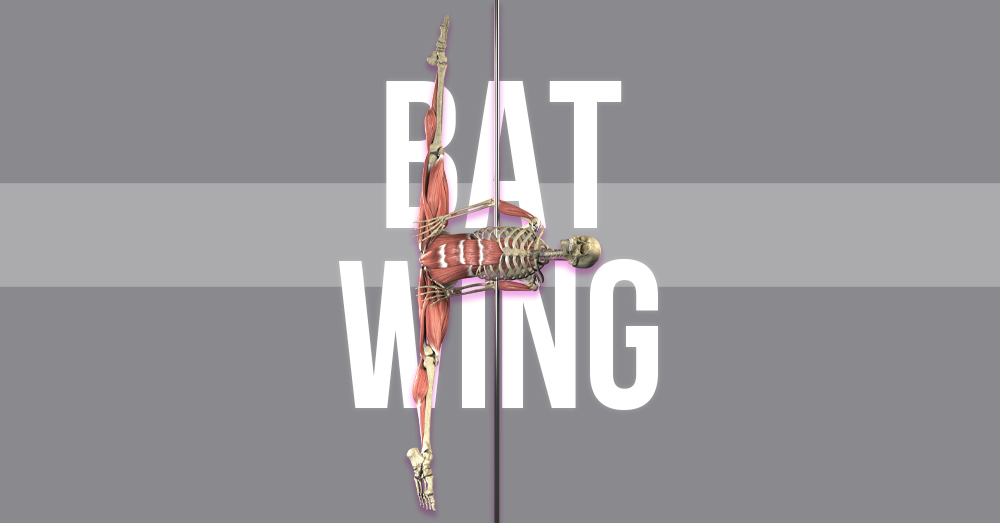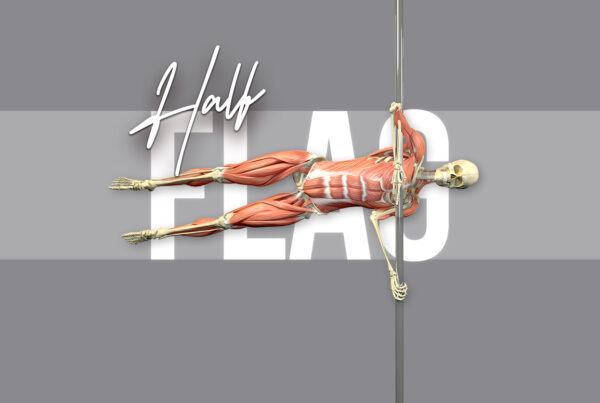Is a badass batwing on your pole trick wish list? Well, come join me for some extra batty pole nerding!
Before we pole nerd, let’s talk bats (yup, actual bats)…
I chose the bat wing for this month’s anatomy post because we’re supporting The Bat Conservation Trust in our 2022 Give Back Friday sale. We’ll be running a MASSIF 30% discount off our online training programmes and ebooks – with a percentage of profits going to the bat charity.
- Paper copy books are excluded!
- Ends Sunday 27 November 2022.
Anatomy of the Bat Wing
Rather watch than read? I got you! You can check out the 90-second whistle-stop tour of this blog post in the video below!
To hold our body parallel to the floor in the bat wing position—which, let’s face it, is essentially a super extra elbow-demon of a human flag—we need some anti-lateral flexion super power from our core.
The muscles which help us keep our flag horizontal and prevent it from drooping towards the floor (technical term for that droop = ‘lateral flexion’), are primarily the obliques, quadratus lumborum, psoas major and erector spinae (spinalis, longissimus, iliocostalis). Particularly those on the top side of our body.
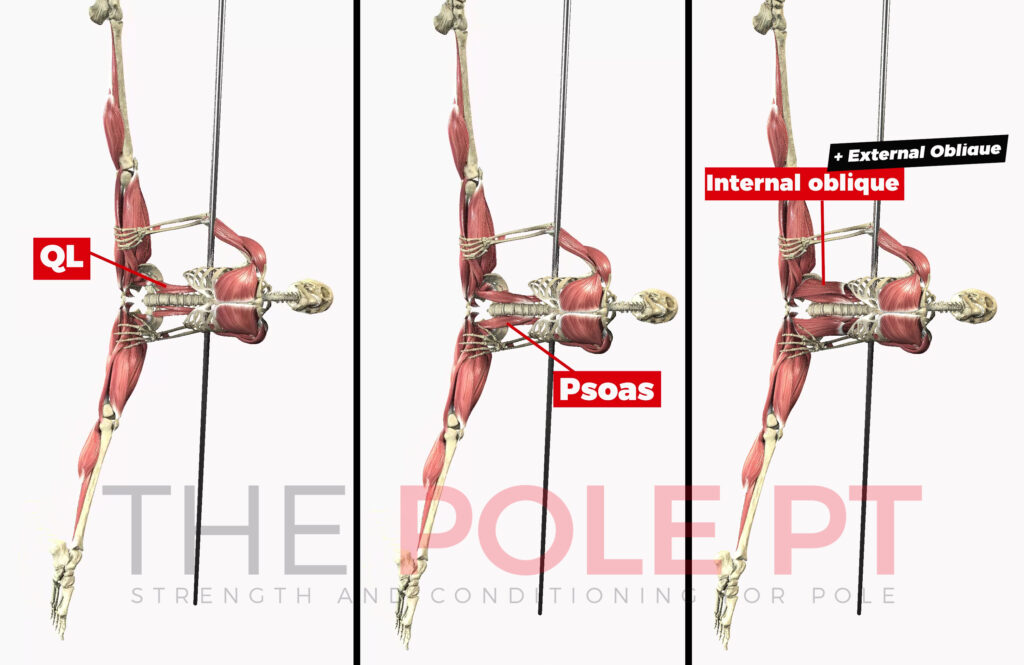
My obliques are like a shield of steel*
*Extra points if you got that Batfink reference! 😉
Our obliques are working EXTRA hard as not only are they one of the key players resisting lateral flexion, they are also resisting rotation of the pelvis towards the floor!
Our erector spinae muscles have another role to play, too, as they also extend our spine to create room for the pole behind our back.
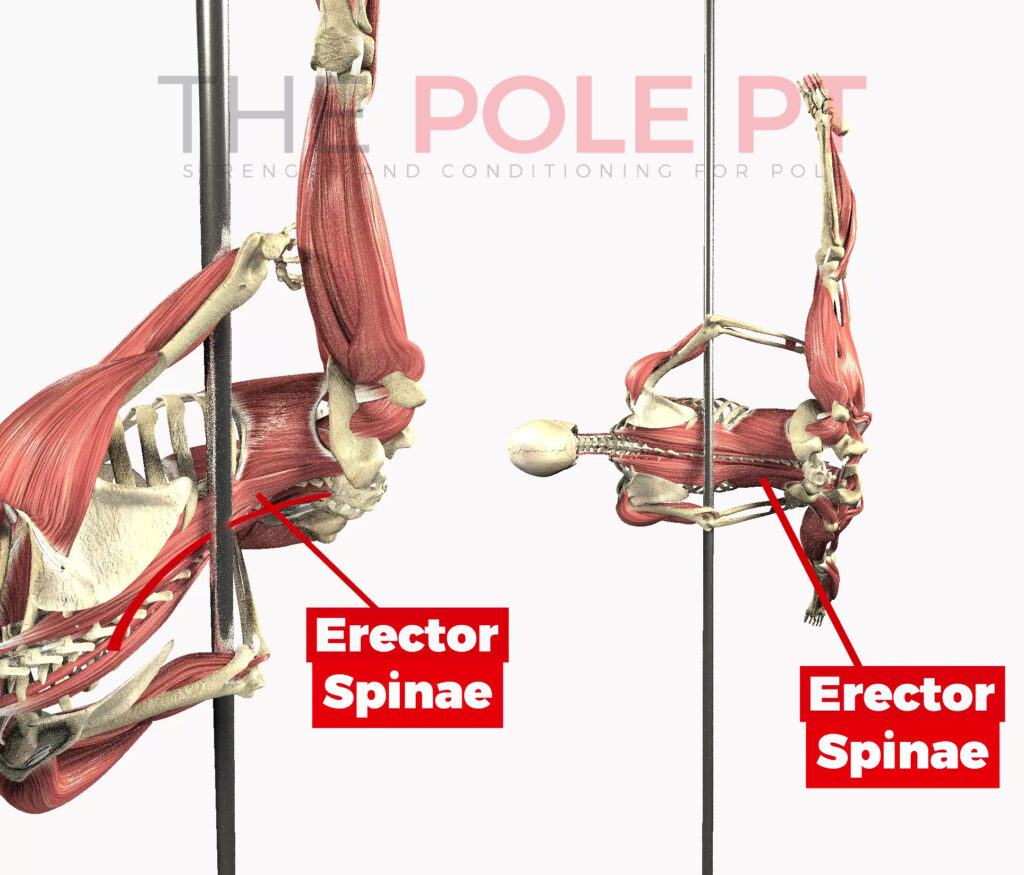
Putting the ‘wings’ in the bat wing
Our arms are extended slightly behind our body with our elbows flexed around the pole. There are a few things at play here…
Our biceps, pecs and anterior deltoid are contracting to hold our arms around the pole.
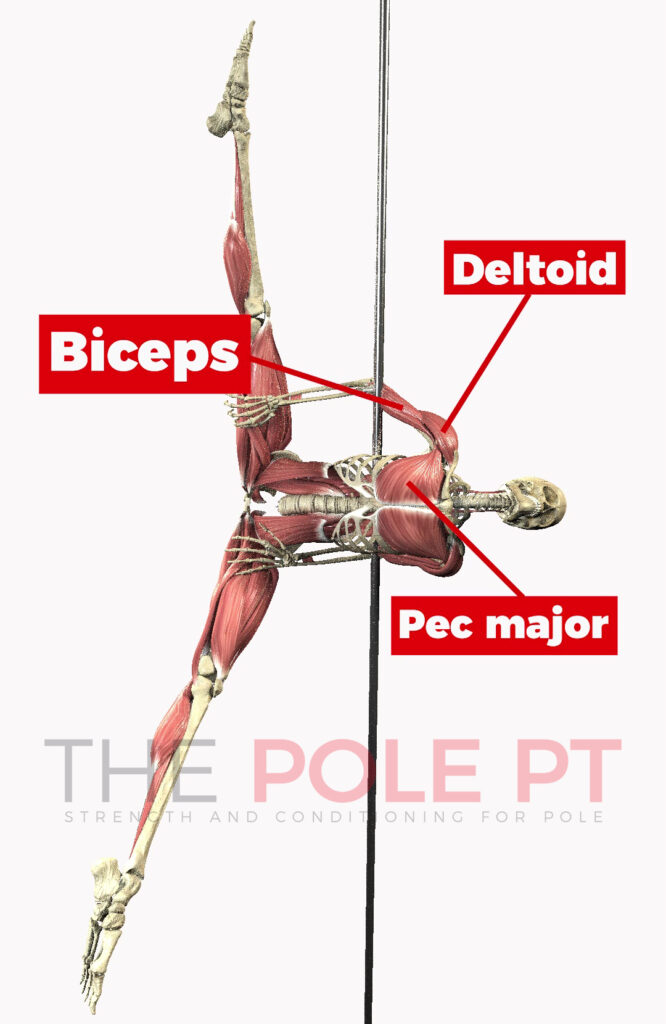
Our latissimus dorsi on the top side is probably also engaged to help resist the torso dropping away from the top arm, but as the grip points with the pole are all centred around the upper body and particularly across the mid-back, it’s the lower torso and legs which have the least support from the pole, placing the biggest demand on our core (discussed above) and legs. Speaking of which…
Leg engagement in the bat wing
Our hip flexors (primarily iliopsoas) and hip abductors (primarily gluteus medius and tensor facae latae) work together to hold our legs in the straddle.
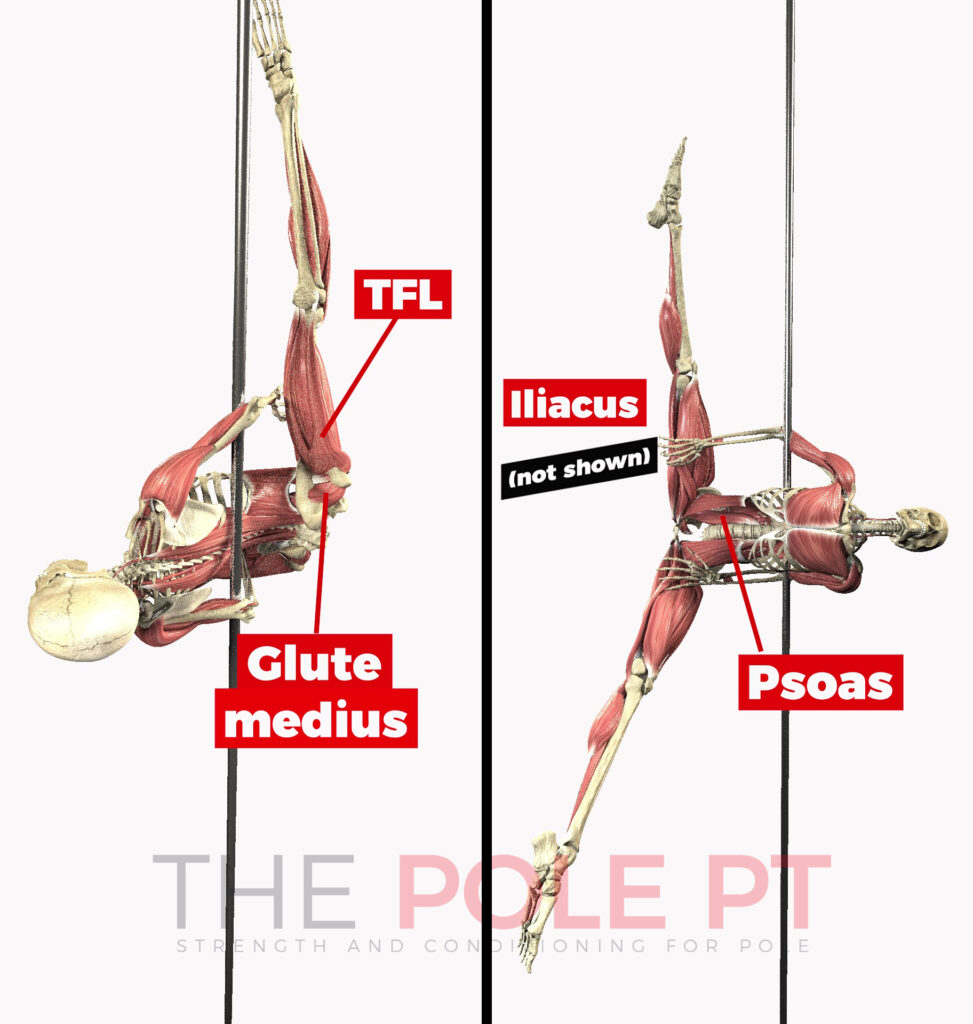
Due to the ‘side-on’ position of our body, our leg muscles probably aren’t working equally on both sides. The hip abductors on our top leg are working to keep the leg lifted (and usually this is ‘assisted’ by the top hand), whereas on the bottom leg, the hip adductors are probably more active as they have to contract to resist increased hip abduction against gravity.
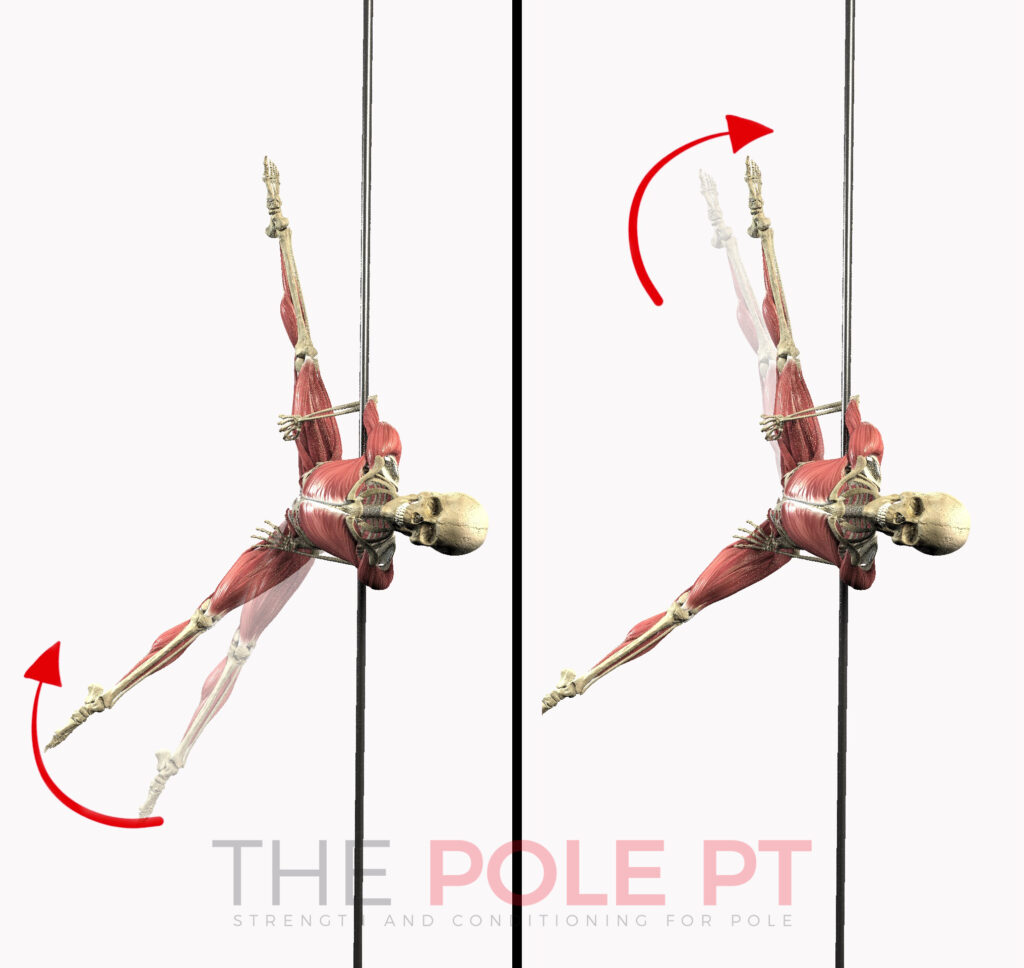
The closer our feet are to the contact point of the pole and our centre of mass, the shorter the ‘lever’ and the less core strength that will be required to hold the position. This is the reason most dancers will find the straddle leg bat wing variation easier than the more advanced ‘pencil’ version with both legs straight.
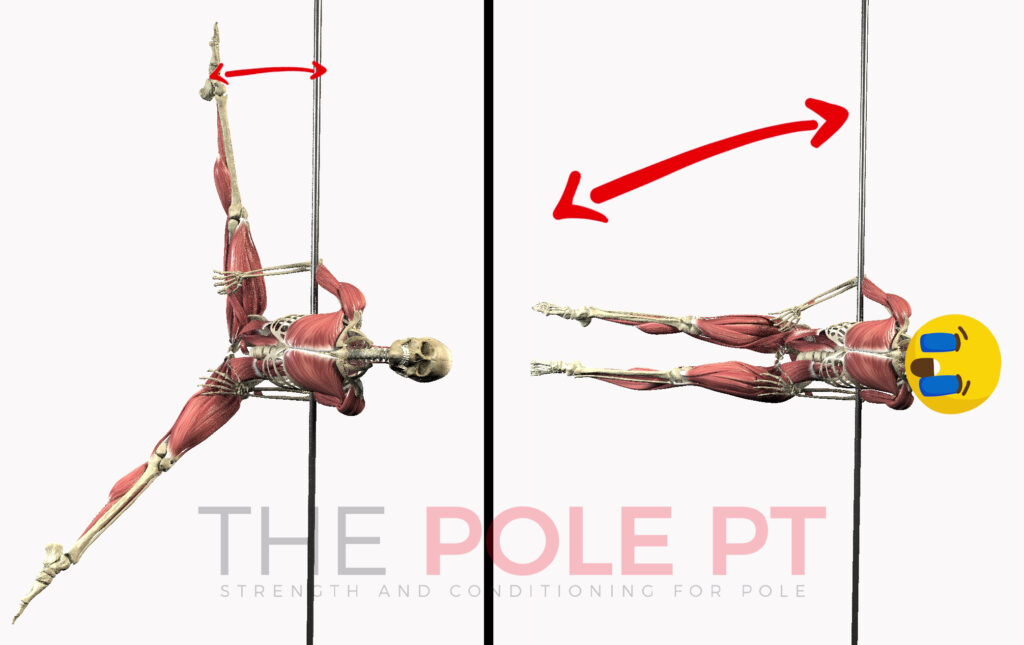
PS. If you had fun exploring the anatomy of the bat wing with me, I think you’ll enjoy my book, Pole Anatomy – available now for immediate ebook download or in paperback!


